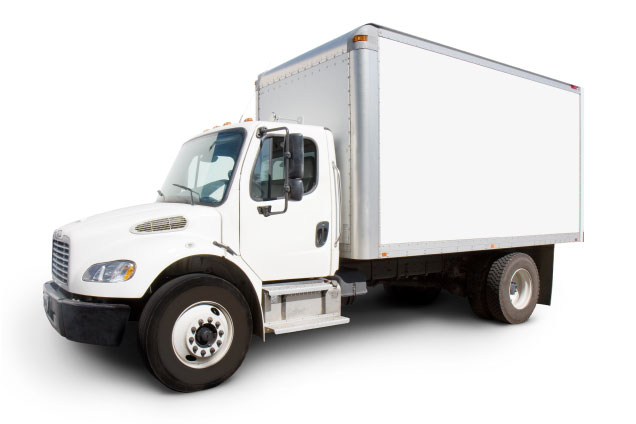How to Prepare a Freezer for Safe Storage When Idle
Posted on 22/05/2025
How to Prepare a Freezer for Safe Storage When Idle
When your freezer is not in regular use--perhaps due to a seasonal household shift, a long vacation, or during a kitchen renovation--properly preparing it for idle storage is essential. Neglecting this step can lead to unpleasant odors, mold and mildew growth, and mechanical issues that could affect performance later on. In this comprehensive guide, we will discuss how to prepare a freezer for safe storage when idle, ensuring your appliance remains clean, fresh, and ready for use when needed.
Why Is Proper Freezer Preparation Important?
Understanding the importance of correctly preparing your freezer before a period of non-use can save you future headaches. When a freezer is left idle, especially if it still contains some residual moisture or food particles, it becomes a breeding ground for bacteria, mold, and foul odors. In worst-case scenarios, pests may find their way inside and mechanical issues could develop due to poor care.
- Prevents mold and mildew growth
- Eliminates potential pests
- Avoids unpleasant odors
- Protects internal components
- Ensures a longer lifespan for your appliance

Step-By-Step Guide to Safely Storing Your Freezer When Not in Use
To safely store a freezer when idle, follow these clearly outlined steps. Each stage is crucial in maintaining the appliance's condition and functionality.
Step 1: Remove All Contents
The first action in preparing a dormant freezer for storage is to empty it completely. This includes all food items, ice packs, shelves, drawers, and any removable trays or storage bins.
- Discard expired or unwanted food items so as not to attract pests.
- Transfer salvageable frozen items to another running freezer or cooler if available.
- Take out all removable parts to allow thorough cleaning and drying.
Step 2: Unplug and Defrost the Freezer
Once emptied, unplug the freezer to safely proceed with cleaning. If your freezer is a manual defrost model, allow it to fully defrost before cleaning. This typically takes several hours, so plan accordingly.
- Open the door to speed up the defrosting process.
- Place towels around the base to catch melting ice and water.
- Some modern freezers have a drain plug--use it if available to remove melted water efficiently.
Step 3: Clean the Interior Thoroughly
This step is crucial to discourage odors during storage. Clean your freezer's interior with a mild detergent or a solution of baking soda and warm water.
- Mix 1-2 tablespoons of baking soda in a liter of warm water for a non-toxic cleaning solution.
- Wipe down all surfaces, including the door gasket and crevices.
- Wash removable shelves and bins separately, ensuring all food particles are eliminated.
Tip: Avoid using harsh chemicals that may leave residue or damage surfaces.
Step 4: Dry the Freezer Completely
Moisture is the enemy when storing a freezer that's not being used. Use dry towels or cloths to completely remove any moisture from the interior and all removable parts. Allow components to air dry if necessary.
- Leaving the door open for a few hours can help ensure that no moisture is trapped inside.
- Double check gaskets and grooves for hidden dampness.
Step 5: Clean the Exterior and Coil Area
Not only should you focus on the freezer's interior, but also its exterior and mechanical parts. Dust and debris can affect efficiency when the freezer is restarted.
- Wipe down the exterior surface with a damp cloth, paying attention to handles and sides.
- Vacuum the condenser coils (located at the back or base of the freezer) to remove dust and prevent overheating issues when next used.
Note: Refer to your user manual before accessing or cleaning any electrical components.
Step 6: Prepare the Freezer for Long-Term Idle Storage
The manner in which a freezer is stored when not running is critical. There are several essentials to follow:
- Keep the door slightly ajar: This prevents musty odors and mold formation. Most freezers have a feature to prop the door open; if not, use a towel or a wedge.
- Store removable shelves and drawers inside the freezer: Doing so ensures they remain together and are also allowed to air out.
- Stash an open box of baking soda or activated charcoal inside: This absorbs lingering odors.
- Ensure the freezer is unplugged: Avoid electrical hazards and unnecessary power consumption.
Where and How to Store an Idle Freezer
Proper placement is another part of preparing a freezer for safe idle storage.
- Choose a dry, well-ventilated area that is sheltered from the elements.
- Avoid direct sunlight or damp basements where condensation or mold can occur.
- If possible, place the freezer on a pallet or riser to keep it off the ground--especially important in garages or unfinished basements where floors might become damp.
- Cover the freezer loosely with a breathable material, like a cotton sheet. This keeps dust away but still allows air circulation.
Additional Tips: Seasonal and Long-Term Freezer Storage
A few extra steps can go a long way in maintaining your freezer during seasonal downtime.
-
Regularly Check the Freezer:
- Every month or two, inspect the appliance for any signs of mold, pests, or moisture buildup.
- Air out if necessary to keep it fresh.
-
Keep Kids and Pets Away:
- Freezers with the door propped open may be hazardous if children or animals can access them.
- Block off the space or place warning signs when possible.
-
Protect Power Cord and Plugs:
- Wrap the power cord securely, and tuck it away to prevent tripping or chewing by pets.
- Check for damages before plugging the freezer back in.
-
Label or Tag the Freezer:
- Especially useful if you store multiple appliances or share a storage space.
Common Mistakes to Avoid When Storing a Freezer
Understanding what not to do when preparing your freezer for non-use can be just as important as following best practices.
- Do not leave the door closed tightly for long periods: Mold will grow, and foul smells will permeate.
- Never store with moisture inside: Even small drops can cause huge problems.
- Avoid taping the power cord to the appliance: Adhesive can degrade and damage the exterior finish.
- Do not store outdoors without full protection: Rain, humidity, or pests can cause irreversible damage.
Reviving Your Freezer After Storage
Bringing your appliance back into service is straightforward if you've prepared it correctly for safe freezer storage during idle periods.
- Inspect again for mold, pests, or debris.
- Ensure the interior is dry and clean before plugging it in.
- Reconnect to power and allow several hours to reach optimal temperature before restocking with food.
- If odors linger, wipe with fresh baking soda solution and allow more airing out time.

Frequently Asked Questions About Freezer Storage and Preparation
1. Should I unplug my freezer if not in use?
Yes. Unplugging the freezer while idle reduces energy usage, minimizes risk of electrical faults, and allows you to thoroughly clean for odor and mold prevention.
2. How can I prevent freezer mold during long-term storage?
Ensure the appliance is completely dry before shutting the door (leave it open if possible), and place a moisture absorber such as baking soda inside.
3. Can I store my freezer in a garage?
Yes, but pick a dry, clean spot elevated off the floor when possible, and ensure it's protected from extreme temperatures and humidity.
4. How often should I check a stored freezer?
About once a month, perform a quick check for moisture, odors, or signs of pests.
5. Is it safe to use my freezer right after storage?
After proper inspection and cleaning, yes--make sure it's dry and has no lingering smells before plugging in.
Conclusion: Long-Term Freezer Care Pays Off
Taking the time to prepare a freezer for safe idle storage is a small investment with big rewards. You'll avoid frustrating surprises, extend your appliance's useful life, and ensure it's immediately ready for service in peak condition. If you follow these simple, effective steps, your freezer will remain fresh, mold-free, and fully functional--no matter how long it stays idle.
- Empty, clean, and dry thoroughly before storage
- Store in a dry, ventilated, and safe location
- Leave doors ajar and check periodically
- Label, cover, and protect electrical cord and parts
With a little preparation, you can rest easy knowing your freezer is safe, clean, and perfectly poised for action when you need it again.





